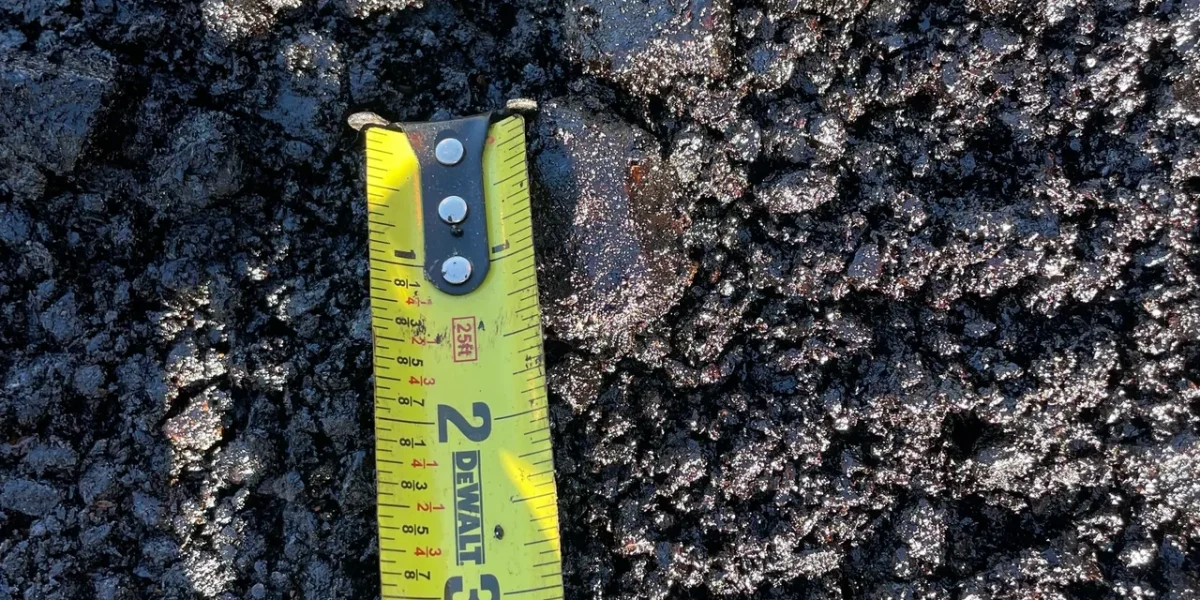Choosing the right type of hot mix asphalt (HMA) and ensuring proper installation are essential for constructing durable and long-lasting pavements. Type-B and Type-D HMAs are specifically designed for different layers of pavement, each with distinct aggregate sizes and purposes. Additionally, the importance of tacking between lifts cannot be overstated for optimal pavement performance.
Type-B Hot Mix Asphalt: Use Cases, Aggregate Size, and Installation Depths
- Use Cases: Type-B hot mix asphalt, also known as the binder course or base course, is used for the intermediate layers of asphalt pavements. It provides structural support and distributes loads across the pavement. Typical applications include:
- Highways and Major Roads: Designed to handle heavy traffic loads and provide a stable foundation for the surface layer.
- Commercial and Industrial Areas: Suitable for areas with frequent heavy vehicle traffic, such as delivery trucks and industrial machinery.
- Airport Runways and Taxiways: Provides the necessary support to withstand the weight and stress of aircraft.
- Aggregate Size: The aggregate size in Type-B HMA is typically larger, ranging from 0.75 inches to 1.5 inches. This larger aggregate size enhances the structural capacity of the binder course, making it capable of supporting heavy loads.
- Installation Depths: The installation depth for Type-B HMA generally ranges from 4 to 8 inches, depending on the expected traffic load and subgrade condition. For high-traffic areas such as highways or industrial zones, a depth closer to 8 inches is recommended to provide additional strength and durability.
Type-D Hot Mix Asphalt: Use Cases, Aggregate Size, and Installation Depths
- Use Cases: Type-D hot mix asphalt, also known as the surface course or wearing course, is used for the topmost layer of asphalt pavements. It provides a smooth, durable, and weather-resistant surface. Common applications include:
- Residential Streets and Driveways: Ideal for lighter traffic loads, providing an aesthetically pleasing and smooth surface.
- Urban Roads and City Streets: Enhances driving comfort and reduces vehicle wear and tear due to its smooth finish.
- Parking Lots: Offers a durable and visually appealing surface for vehicles.
- Aggregate Size: The aggregate size in Type-D HMA is finer, typically ranging from 0.25 inches to 0.5 inches. This smaller aggregate size ensures a smoother surface finish, which is crucial for the top layer of the pavement.
- Installation Depths: The installation depth for Type-D HMA generally ranges from 1.5 to 3 inches. This depth ensures a smooth and resilient surface capable of withstanding daily traffic and environmental conditions.
The Importance of Tacking Between Lifts
Tacking between lifts involves applying a tack coat, a thin layer of asphalt emulsion, between the different layers of pavement. This process is crucial for several reasons:
- Enhanced Bonding: A tack coat ensures that each asphalt layer adheres properly to the one below, preventing slippage and delamination.
- Improved Durability: Proper adhesion between layers helps distribute traffic loads more evenly, reducing the likelihood of cracks and other pavement failures.
- Waterproofing: Tack coats act as a barrier to moisture, protecting the pavement structure from water infiltration, which can weaken the subgrade and lead to pavement damage.
The application of tack coats is essential to maintain the structural integrity of the pavement, ensuring that all layers work together as a cohesive unit.
Selecting the appropriate type of hot mix asphalt and installing it at the correct depth are fundamental steps in constructing durable and long-lasting pavements. Type-B HMA, with its larger aggregate size, provides the necessary structural support for heavy-duty applications. Type-D HMA, with its finer aggregate size, offers a smooth, wear-resistant top layer for everyday use. Equally important is the application of tack coats between lifts to ensure strong adhesion and overall pavement integrity. By understanding and implementing these best practices, we can achieve high-quality asphalt pavements that stand the test of time.
When you think of Asphalt Paving, think of our team at J&L Pavement West! From driveways to highways, we do it all!



